Allez, Hop ! Au Resto...
Inside French Restaurant Culture, with a Tasty Little Slice of My Former Life
I believe everyone should have to work in a restaurant at some point.
You know, kind of like military duty? It’s the best school ever for lots of key life skills, from getting organized to dealing with stress, from learning how to serve and sell to mastering the delicate art of turning around a difficult situation (or customer) and getting to a win.
Not everyone knows how deep my love for restaurants runs, nor how important it has been to my life and my career. When I first moved to New York City, I really needed a job, and my friend Lara from acting class (yes, I took acting classes) got me a gig at a weekend cabaret in Soho called Upstairs at Greene Street. I didn’t know anything about anything—didn’t know how to open a bottle of wine, didn’t know the names of any cocktails or what was in them. To give you an idea, I was actually offended the first time someone ordered a Virgin Mary because I hadn’t a clue and it sounded rude.
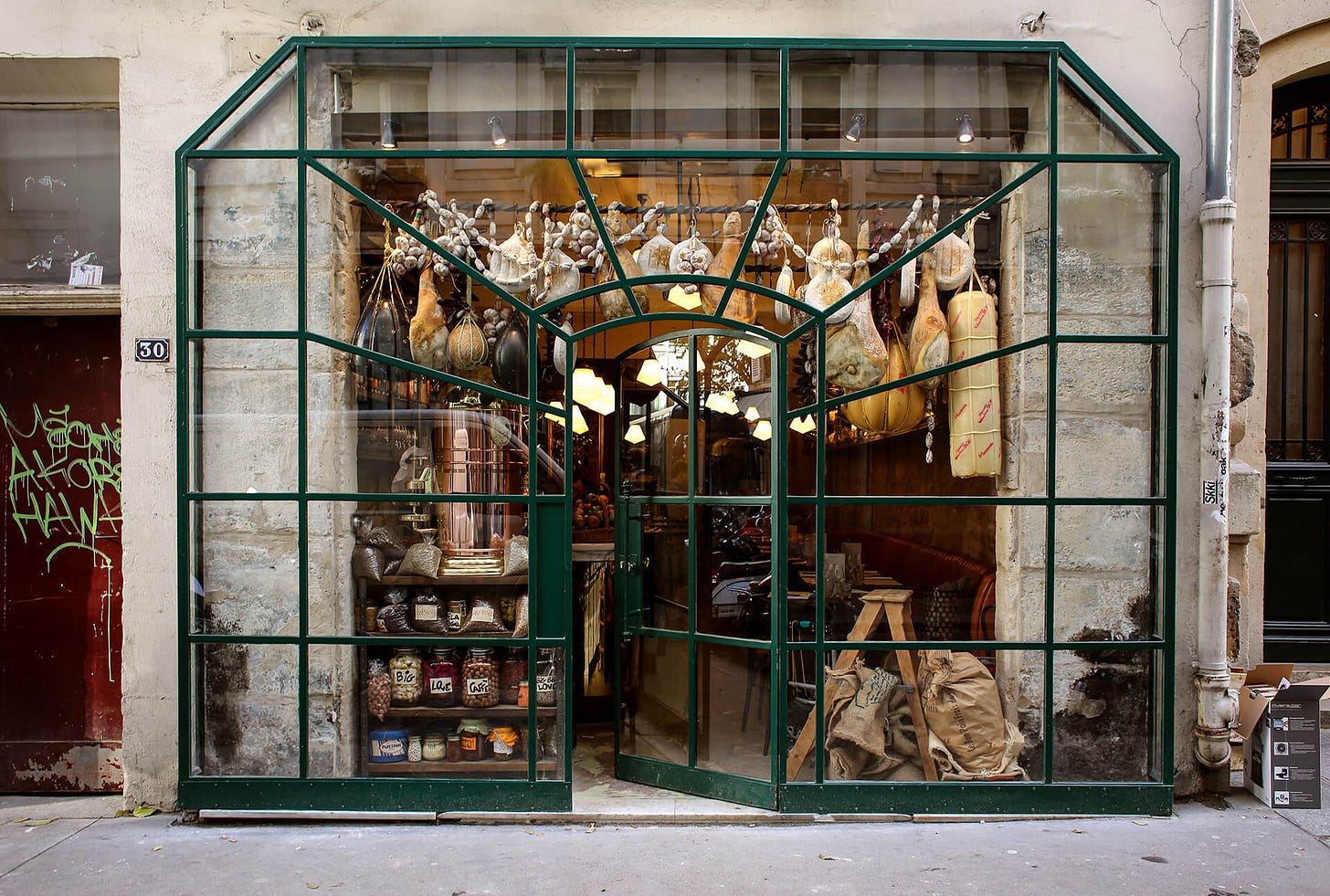
The biggest perk of that job (and I didn’t even realize it till years later) was that I saw some of the most talented performers in New York City working on their craft when they were just coming up, on the brink of stardom. Jon Stewart would come and do standup sets, and no one really knew who he was yet. Same with Chris Rock and Joy Behar and Mario Cantone (most famous for his role as Charlotte’s friend on Sex and the City), and many more.
After that job, I worked for years in all kinds of spots, from wine bars and diners to the hottest haunts in the Big Apple. Pino Luongo’s Le Madri in the early 90s, anyone? I mean, I waited on Don Henley from The Eagles and he was on a date!
And oh yeah, #humblebrag I was on the team at the original Union Square Cafe, when Danny Meyer had only one eatery (he owns something like 18 now, plus he’s the mastermind behind the global hamburger chain Shake Shack). He remains the biggest influence on my attitude toward service, and I’ll always be grateful.
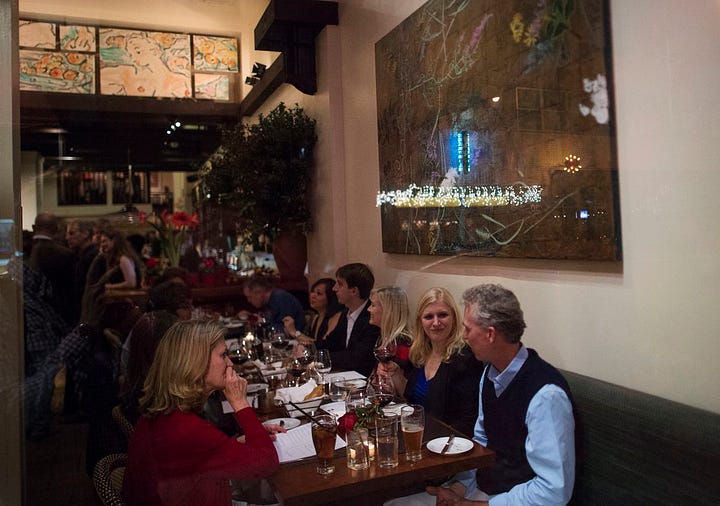
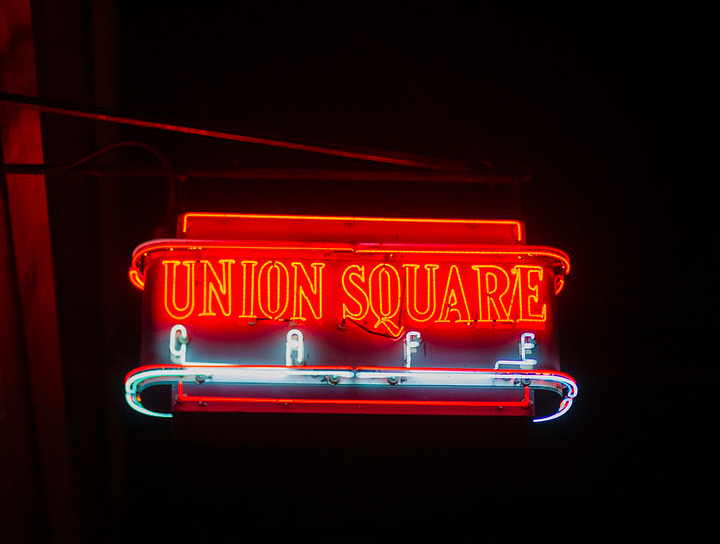
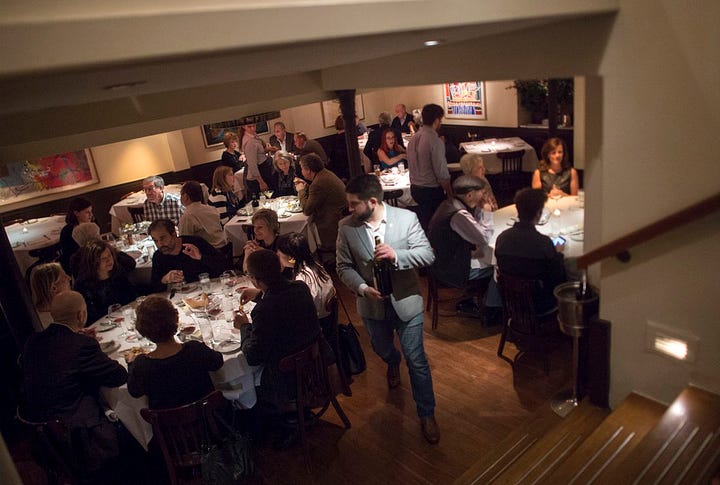
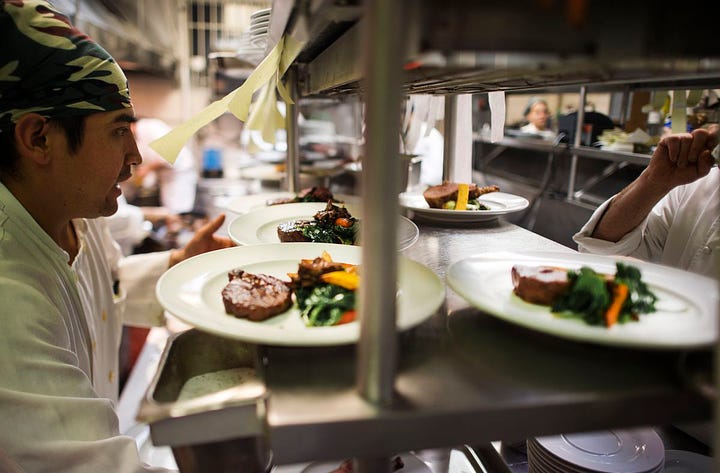
Eventually, as one does, I met a chef and shacked up with him right before he decided to open his own Italian place near Manhattan’s Madison Square Park. When his planned partner, who was supposed to be in charge of the front of house, backed out at the last minute, I put my college plans on hold (again) and jumped right in. I helped grout the floors on my hands and knees before we opened, I took reservations, and I was the gatekeeper at the door on busy nights when cool celebs (Frances McDormand! Eric Stoltz! Julie Andrews!) would come in for the admittedly delicious Italian food.
Against my better advice, The Chef had named the place Follonico, which in a pre-Google era was not a great move since no one could pronounce it well enough to ask the telephone operator for the phone number (that’s how we got phone numbers in the olden days) to make a reservation. One famously pithy and powerful critic even compared the restaurant’s name (an homage to a hill town in Tuscany) to “an act of love.” Cringe! But she still gave us a great review, as did all the critics. We were well-loved by chefs, wine people, real restaurant folks.
From that job all the skills that would serve me in my future life were seeded and began to grow. I learned how to do double-entry bookkeeping and how to write a press release. I taught myself how to buy, care for and arrange flowers since we couldn’t afford a florist. Several years later, I left the restaurant (and The Chef) to start my own floral events business after this incredible genius asked me to do flowers and styling for his restaurant.
And I credit all those years of restaurant shift work and management—along with a copy of Martha Stewart’s “Wreaths” book that was given to me by one of my dearest friends who is now the fancy co-owner of all these iconic restaurants in NYC— with creating a true foundation of entrepreneurial know-how and the toughness it takes to jump in and keep swimming when you have no idea what you’re doing.
The Chef went on to write a James Beard award-winning memoir about what happened after I left him. I went on to build an A-list roster of event clients, and write seven books about weddings and entertaining. Along the way, I also earned a prestigious wine certificate, the WSET Level 3 in Wines and Spirits.
As I became more independent and my business flourished, I started traveling solo to Paris every once in a while. I loved going to restaurants by myself, but I always struggled a bit with wanting to use the French I had learned in school so that I could look cool ordering my food and drinks. Not only had I forgotten much of what I’d learned; I also had never learned how to speak everyday French. So despite my efforts, the servers always spoke back to me in English and tossed the English menu on the table even when I greeted them with Bonjour. Has that ever happened to you? I hear from a lot of other folks that it drives them bananas, and I agree. If you want to hear what I did to fix that, write me a comment and I’ll tell you, because I have a technique!
Anyhow, it wasn’t until later, when I spent more time here in France, that I started to understand something important. It’s not just the language that can make things awkward. It’s the differences in restaurant culture itself between France and the U.S. that I just hadn’t fully absorbed or integrated in my approach to dining and drinking in a new country. But how is dining in France different? How are French restaurants different from American eateries?
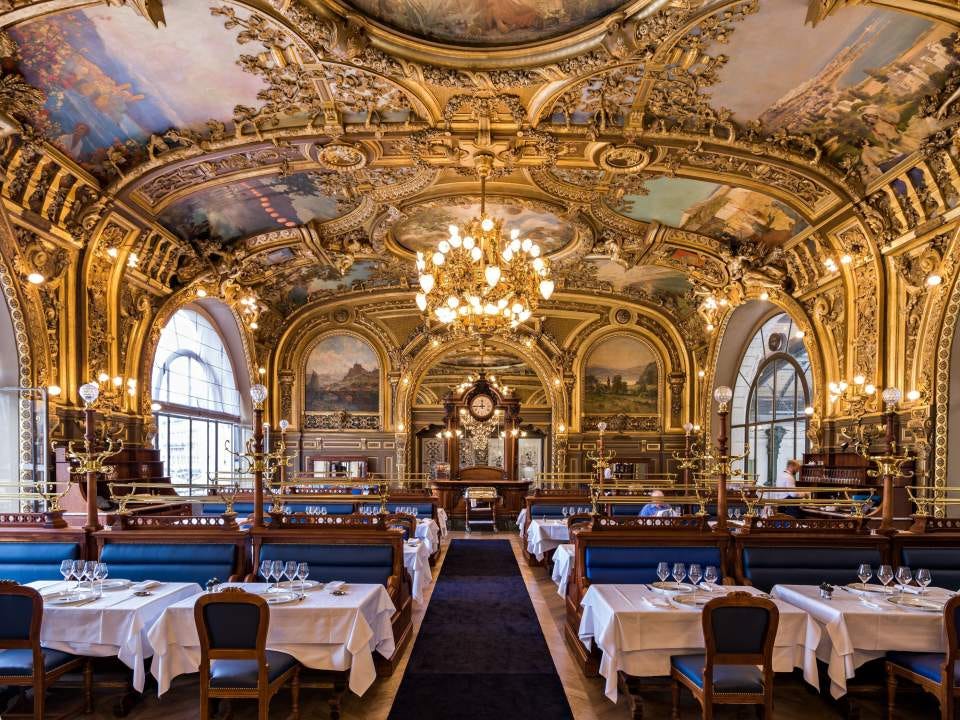
Here’s my take.
The biggest differences (aside from the language) are in the experience itself:
Even for small restaurants, reservations are generally appreciated, although they may not be required. For cafés and more casual places, it’s not necessary. The Fork is one of the big platforms where you can find many (but not all) restaurants and make reservations, but there are still a good number of restaurants where you just may need to call on the phone. And just like any hot or trendy restaurant anywhere, you’ll likely need to reserve well in advance.
Unlike in the States, when you arrive and are seated in a restaurant, you won’t forcement (necessarily) be greeted immediately at your table. That is totally normal. The pace is just generally more relaxed. You just wait and be patient or strike up a conversation with your dining partner (or a stranger) and a server will be there soon enough. C’est pas grave ! (It’s not a big deal!)
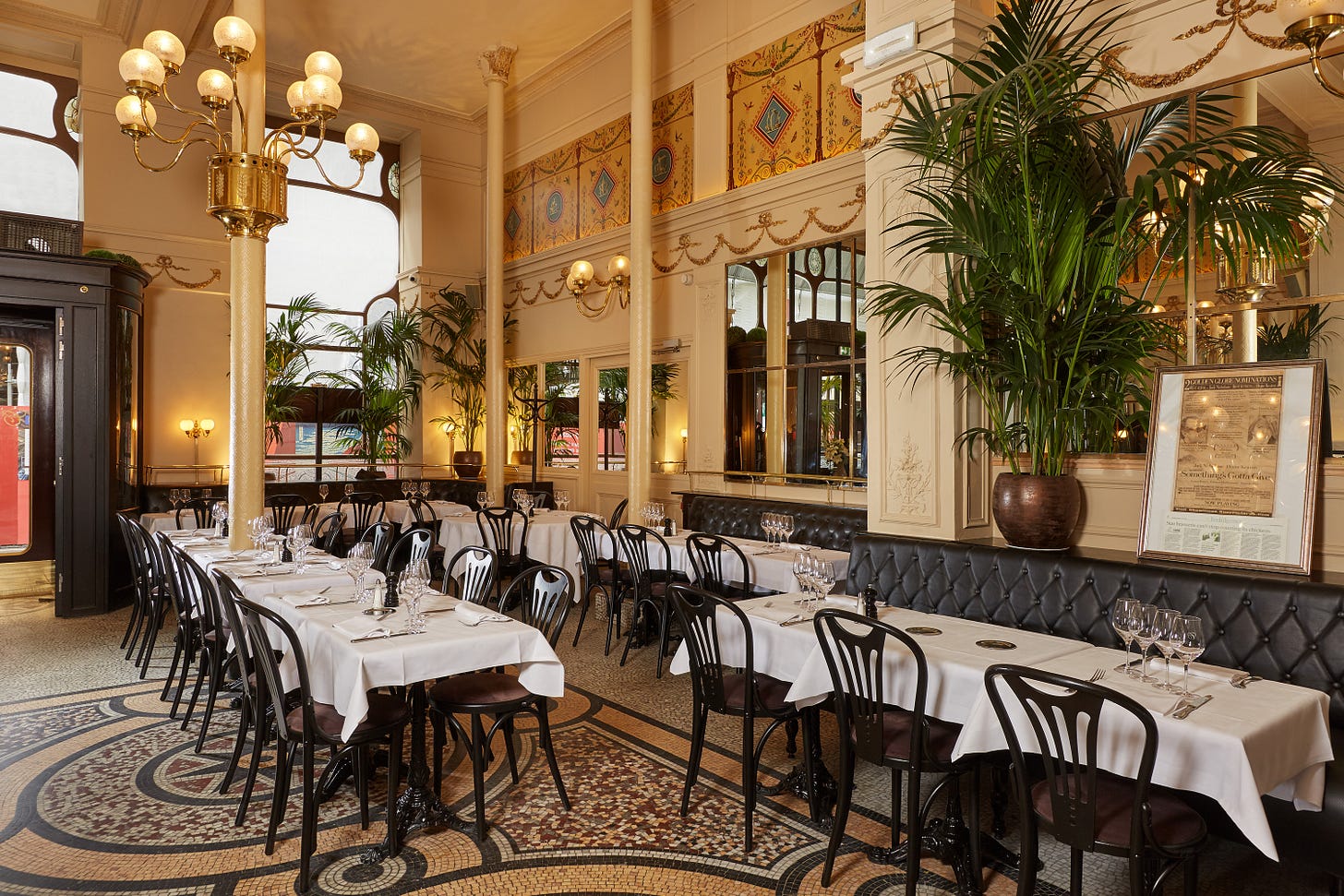
Le Grand Colbert, 2 Rue Vivienne, Paris This one is good to know, because it’s consequential to ordering. The word Entrée, as used on American menus, means “Main Course.” The word Entrée, as used on a French menu, means “Appetizer/Starter.” My husband, Monsieur B, still laughs at this. “Entrée means arrival, so how can it come later?”
French servers don’t always check back with you relentlessly throughout your meal, and in a restaurant setting they don’t generally drop the check.
This is not a dereliction of duty. It’s letting you have your space and respecting your dining experience. You will normally have to ask for L’addition, s’il vous plaît (The check, please, pronounced “laddisyon see voo play”).
Parcelles, 13 Rue Chapon, Paris Tipping in France is not required, nor expected. I know! This changed my life. Restaurant workers are paid a salary and have benefits, so they are not living from tips. It’s part of the reason why eating out is so much more accessible in France. Un pourboire is always appreciated, though, so if you appreciate your server, leave them something. But 20-30% of your meal? Mais non. At a café, just some change or a Euro or two. For a much bigger meal, leave five or ten euros. Also, generally tips are left in cash and there is rarely a place to write them in on a credit card receipt, and unlike in some parts of the world, it is not cool to leave a tip in U.S. dollars (hint: the Euro is stronger).
Then just a quick point of French restaurant etiquette. When dining in France, you should always say Bonjour or Bonsoir when you arrive, and don’t forget the Merci when you’re leaving, even if you just call it out with a wave as you’re exiting. This is considered very polite and if you do it, you will be helping your fellow Americans traveling in France to gain a more elegant reputation.
Of course, there’s a lot more to know about dining customs in France, so I put together a little video in case you’ll be traveling in or moving to France or you’re just a francophile like me! The video takes you through some highlights of having a better experience (it’s not a big vocabulary lesson, just enough to help you be a bit more in-the-know).
Oh and if you should find yourself needing some good restaurant recommendations, I recommend you bookmark Paris by Mouth. They’ve got lists of reviews for a bunch of different types of spots, plus they offer genuinely great food tours in Paris.
Bises !
Karen






Thanks so much for the shout out, Karen!
J'adore cet article de blog! Merci beaucoup, Karen!